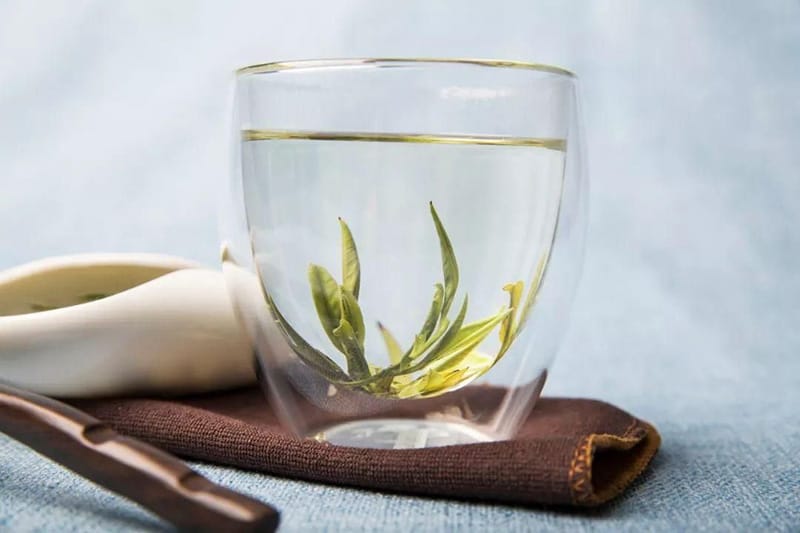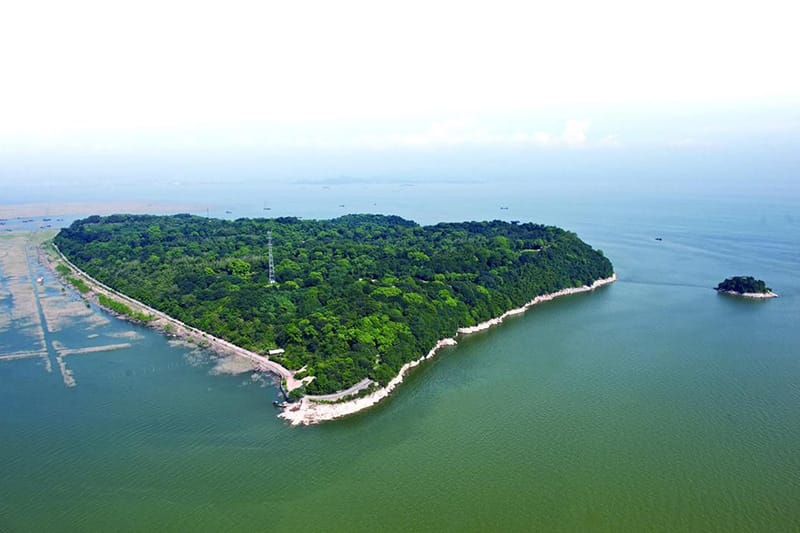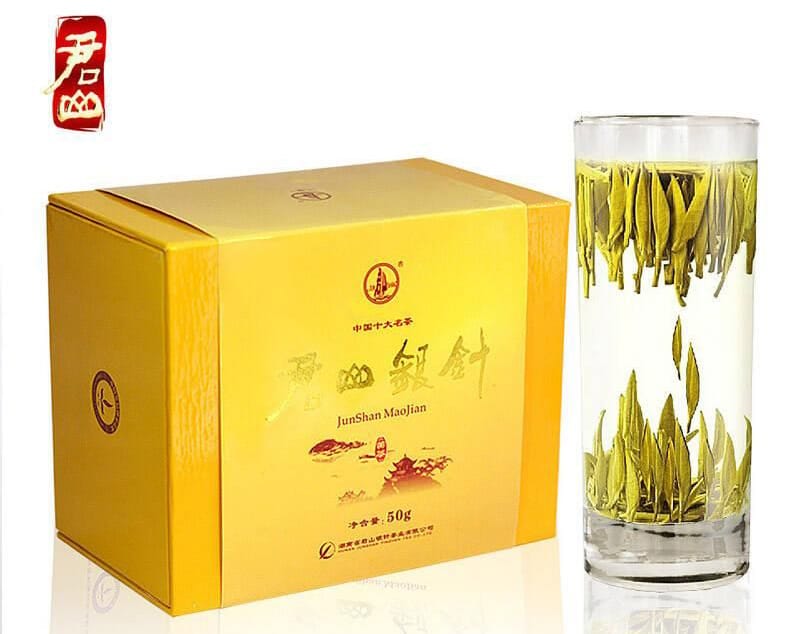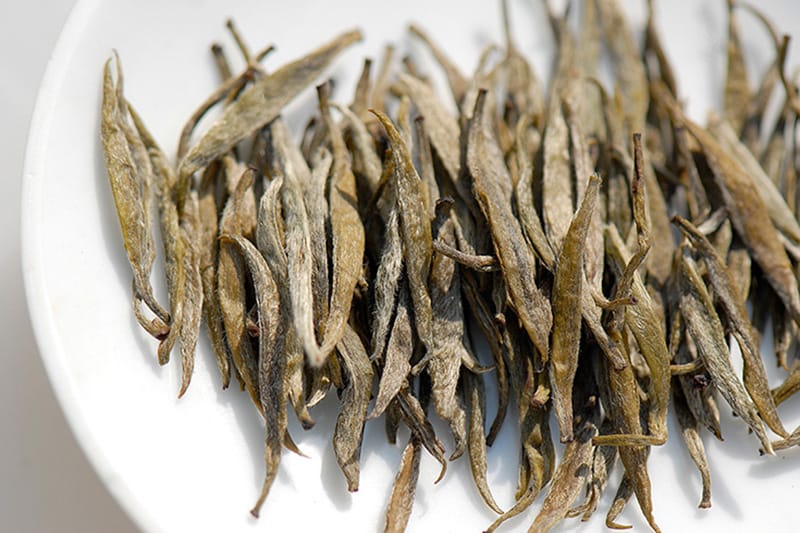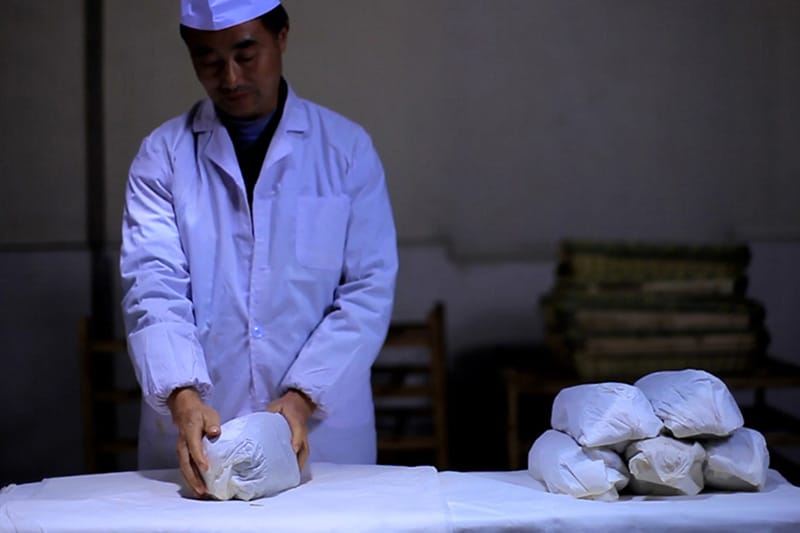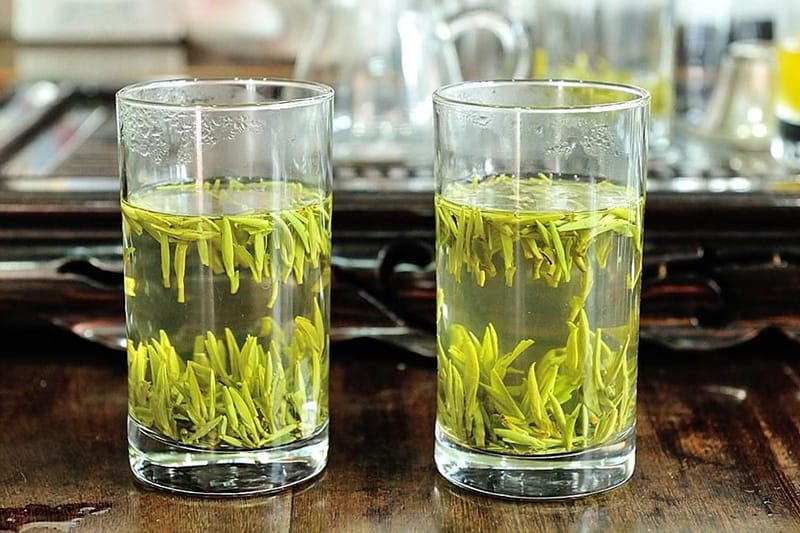Last Updated on 04/04/2021 by Desmond
Dongting Lake is a Chinese tourist attraction, which located in Yueyang, Hunan. Picturesque scenery here, as the inspiration source for the poets for a long time. Thanks to the excellent natural environment, plants growing strong here. An island called Junshan, a scarce yellow tea – Junshan Yinzhen tea originated here. It is said it was Chairman Mao’s favorite; they got the same hometown.
CONTENT
What Is Junshan Yinzhen Tea
Among all the Chinese tea, the more tender leaves tend to be more valuable. Typically, these tea’s name will with words like “Jian,” “Ya,” “Feng,” which refer to the tender buds. If the buds still retain lots of fuzz after processing tea, they will be called “Yinzhen”(silver needle.) Only one bud can be harvested from one plant every picking, so these tender tea got a low yield. Although their names are similar, Junshan Yinzhen and Baihao Yinzhen are not the same tea. The latter is a high-quality white tea, and you can know more here.
Junshan Yinzhen tea is only made from the tenderest buds, belongs to Yellow Bud Tea, looks like flat needles. The leaves are yellow-green, cover with lots of tiny white fuzz(also call “Hao“). Thus, Junshan Yinzhen is also called “gold-mounted jade.”
Junshan Island started producing tea from Tang Dynasty. But like other regions, it was only producing green tea. The Junshan tea’s earliest name is Baihe (white crane) tea.
It is said an immortal planted a tea tree here, built a temple and dug a well. Brewing the tea from the holy tree with the water from the well, the steam looks like the white crane flying high to the sky.
The emperor like it very much and nominated the tea and the well-water as tributes. Later, the water was replaced during the journey, and the emperor didn’t see the steaming picture when making white crane tea. He was so upset and said, “the white crane is death.” What amazing is, the well thousands of miles away suddenly dry, only the tea tree left.
Of course, that is just a legend. Till to Ming Dynasty, people found that the leaves will turn yellow in a wet-hot environment during processing. If to control it well, the flavor will be greater improve; the yellow tea processing born.
Tea masters in Junshan Island tried to produce yellow with the local source leaves, and it came to an excellent result. Later, a truth, not a legend, the Qianlong Emperor of the Qing Dynasty nominated the Junshan Yellow tea as a tribute. Every year, 9kg tea should be paid and only can make by the tenderest buds. This is the later Junshan Yinzhen tea.
China ever voted out 10 great famous tea in 1959; Junshan Yinzhen tea was the only yellow tea selected. But different from the others, only Junshan Yinzhen is not a geographically indicated product and a public brand. Yes, the brand Junshan Yinzhen is independent till now.
It is because, in 2004, the local gov ran a tea industry reform. Several units under Yueyang Construction and Investment Group Co., Ltd jointly invest set up the Hunan Junshan Yinzhen Tea Co., Ltd. It cost millions of dollars to buy out the right to use all the tea plantations on Junshan Island and the brand “Junshan.”
The company took the Junshan Yinzhen tea as the core product to R&D and sale. It means we do not worry about buying fake products, but the price also gets higher because of the monopoly. The company also sells a famous tea Junshan Maojian, but it’s a kind of green tea.
Worth knowing is, In Yueyang, not only Junshan Island but the tea plantations around also produce yellow tea. They ever tried to apply to the gov to make the Junshan Yinzhen into a public brand, but they finally failed. Later, a public brand, “Yueyang Yellow Tea,” came. From a development view, it a negative-sum game to both sides.
How Junshan Yinzhen Tea Processing
The yellow tea processing can’t be said complex, but it is a challenge. Junshan Yinzhen tea is more than that. It needs to keep the fuzz, which is easy to lose during processing, and without fuzz, it can’t be regarded as Yinzhen tea.
The source leaves picking starts from about 3 days before Qingming(a Chinese solar term.) The newborn buds have the richest nutrients at this moment. The tea masters need to pick the buds gently, and they also line a soft cloth in the basket for protecting the weak leaves better.
After picking, the leaves will be through frying, placing, and first-roasting; these steps are the same as green tea processing. Only when drying, tea masters will just roast the leaves to 50% dry for the better following processing. If the leaves are too dry, they will hard to turn yellow; and if not dry enough, the final product will get a bad smell.
The following step is most important in yellow tea processing – sealing yellow. Tea masters will pack the leaves with kraft papers, 1.5kg per package. Then put them in a box, placing them for about 40-48 hours. During it, the leaves begin to oxidation and release heat. The internal substances start to transform, like the braise skill in cooking.
Even though it looks simple, during sealing yellow, tea masters always need to watch the packages out and fine-tuning them according to their experience. The flavor and quality of Junshan Yinzhen tea are basically formed during this processing.
Junshan Yinzhen tea will be through twice sealing yellow. After the first finish, leaves will be roasted again, cost about 1 hour, let the internal substances that had formed settle down. Then tea masters braise the leaves a second time, which cost about 20 hours, till they all become golden. Finally, dry the leaves into Junshan Yinzhen rough tea by a high-temperature roasting.
How Junshan Yinzhen Tea Taste
Junshan Yinzhen tea has a limited yield, only several hundred kilograms per year. Besides, the leaves’ quality is hard to control during processing. It is said the most high-quality Junshan Yinzhen in the year is only offered to influential officials. The products sold on the market have a relative-low quality but still with a high price.
The Junshan Yinzhen tea flavor maybe not so amazing. When you unwrap the small individual package and take the leaves out, first, you can smell a mild herbaceous scent. After brewing, it sends a straw pile-like aroma. And you will become confused soon; the infusion show light-yellow, but it is too light, just like not be brewed enough. It’s exactly how the Junshan Yinzhen tea is, and you should never try to extend the steeping time or even cook it, or you will get a worse taste.
When you take a sip gently, you almost can’t feel any taste but the cooked aroma. Focus on the feeling, you will be able to feel a slightly bitter and astringent, and the fresh taste from the “Hao.” After few seconds, the tongue will feel a more delicate sweetness. You can describe the Junshan Yinzhen tea flavor with subtle and implicit. Its flavor doesn’t come as impact as the other teas, maybe more suitable for the people who got a light-taste.
Storage Method
The authentic Junshan Yinzhen tea has a small individual sealed package, which can better protect the tea from dampness and odor pollution. So all you need to do is to find a good-airtightness iron can for storing them. The storage environment needs to be dark, cool, and dry; an ordinary locker is OK. If you gonna store the tea in a fridge, it’s better to line some papers inside the iron can to prevent the damp.
The Junshan Yinzhen tea official labeled expiration date is 2-3 years. There are few cases of aging yellow tea. Typically, the yellow bud tea is recommended to finish consumption when it still fresh. After a long time of storage, the fuzz on leaves will slowly fall and lose the value.
How To Make Junshan Yinzhen Tea
To brew Junshan Yinzhen tea is very simple. Many of the time, we are for appreciating the leaves dancing in the water.
- Prepare a 200ml glass cup and preheat it;
- Heat the water to boil, then wait for it to cool down to 85℃;
- Unwrap the package and put the leaves into the cup (about 5g);
- Add hot water just to cover the leaves, steep for about 3 seconds, and let them fully stretch. Be gentle when adding water, and Junshan Yinzhen doesn’t need to wash-tea;
- Go on fill in water to 4/5 of the cup, steep for about 1minute. And this moment, you can see the leaves waving up and down just like dancing. The fall down fuzz would not make the water muddy but reflect a dazzling silver light;
- Enjoy;
Junshan Yinzhen tea is not resistant to brew. The second brew will be relatively light, and the third almost comes in insipidness.
